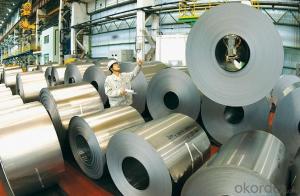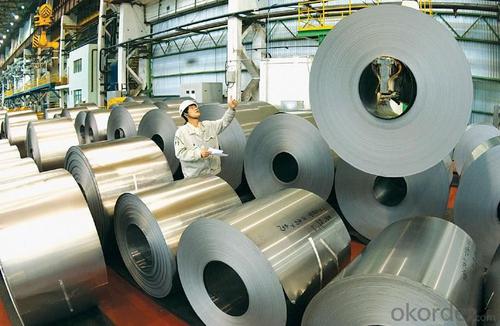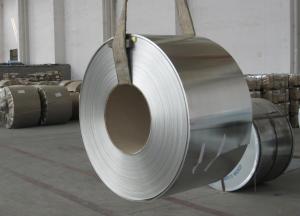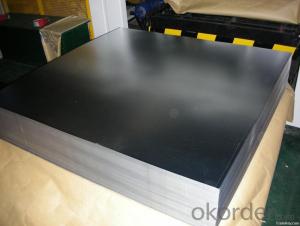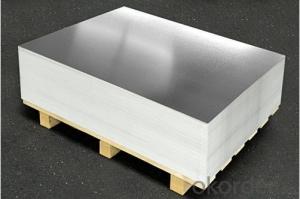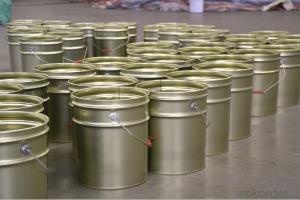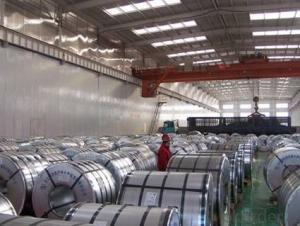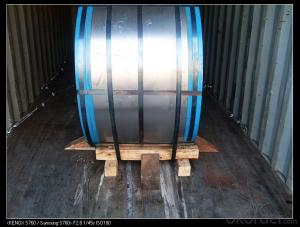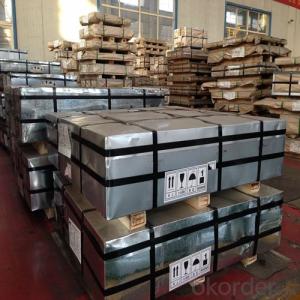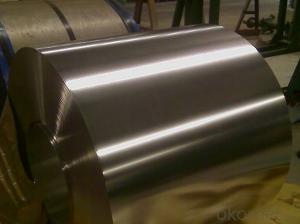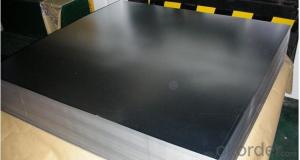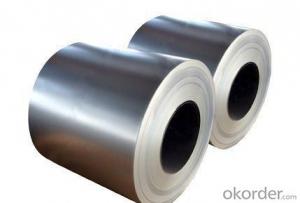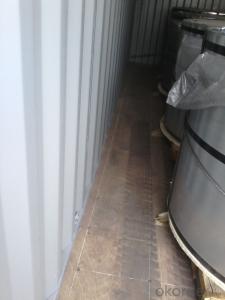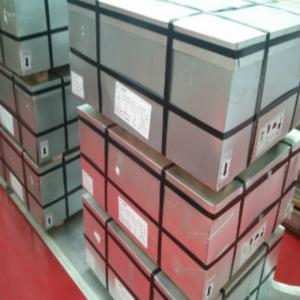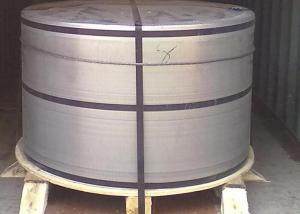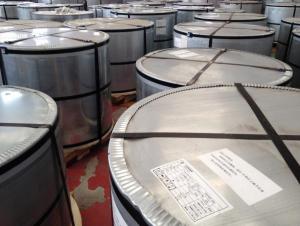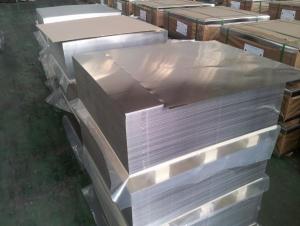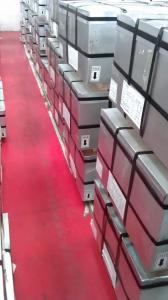Prime Electrical ETP Tinplate for Metal Packaging in Coils
- Loading Port:
- Tianjin
- Payment Terms:
- TT OR LC
- Min Order Qty:
- 25 m.t.
- Supply Capability:
- 20000 m.t./month
OKorder Service Pledge
OKorder Financial Service
You Might Also Like
1.Structure of Prime Electrical ETP Tinplate for Metal Packaging Description
Electrolytic Tin Plate Coils and Sheets for Foods Metal Packaging, is one thin steel sheet with a coating of tin applied by electrolytic deposition. Tinplate made by this process is essentially a sandwich in which the central core is strip steel. This core is cleaned in a pickling solution and then fed through tanks containing electrolyte, where tin is deposited on both sides. As the strip passes between high-frequency electric induction coils, it is heated so that the tin coating melts and flows to form a lustrous coat.
2.Main Features of the Prime Electrical ETP Tinplate for Metal Packaging
Appearance – Electrolytic Tin Plate is characterized by its beautiful metallic luster. Products with various kinds of surface roughness are produced by selecting the surface finish of the substrate steel sheet.
Paintability and printability – Electrolytic Tin Plates have excellent paintability and printability. Printing is beautifully finished using various lacquers and inks.
Formability and strength – Electrolytic Tin Plates have got very good formability and strength. By selecting a proper temper grade, appropriate formability is obtained for different applications as well as the required strength after forming.
Corrosion resistance – Tinplate has got good corrosion resistance. By selecting a proper coating weight, appropriate corrosion resistance is obtained against container contents. Coated items should meet 24 hour 5 % salt spray requirement.
Solderability and weldability – Electrolytic Tin Plates can be joined both by soldering or welding. These properties of tinplate are used for making various types of cans.
Hygienic – Tin coating provides good and non toxic barrier properties to protect food products from impurities, bacteria, moisture, light and odours.
Safe – Tinplate being low weight and high strength makes food cans easy to ship and transport.
Eco friendly – Tinplate offers 100 % recyclability.
Tin is not good for low temperature applications since it changes structure and loses adhesion when exposed to temperatures below – 40 deg C.
3.Prime Electrical ETP Tinplate for Metal Packaging Images
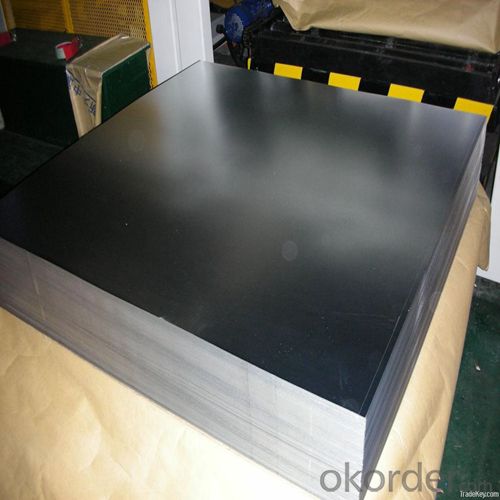
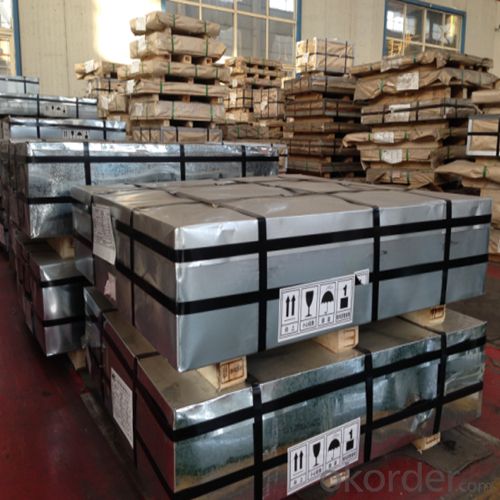
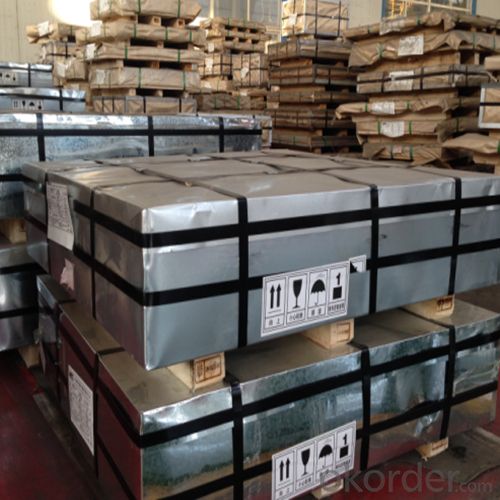
4.Prime Electrical ETP Tinplate for Metal Packaging Specification
Standard | ISO 11949 -1995, GB/T2520-2000,JIS G3303,ASTM A623, BS EN 10202
|
Material | MR,SPCC |
Thickness | 0.15mm - 0.50mm |
Width | 600mm -1150mm |
Temper | T1-T5 |
Annealing | BA & CA |
Coil Inner Diameter | 508mm |
Weight | 6-10 tons/coil 1~1.7 tons/sheets bundle |
Passivation | 311 |
Oil | DOS |
Surface | Finish,bright,stone,matte,silver |
5.FAQ of Prime Electrical ETP Tinplate for Metal Packaging
- How are the Electrolytic Tin Plates specified?
The Electrolytic Tin Plates are specified as per the steel base, extent of tempering, the coating weight, annealing method and the surface finish.
- How many types there are for base steels?
The base steels are of three types: Type MR, L, D
- Q: What are the main factors influencing the demand for tinplate?
- The main factors influencing the demand for tinplate include the growth of the packaging industry, consumer preferences for canned food and beverages, economic conditions, and government regulations on food safety and packaging standards.
- Q: What is the difference between Maguchi Tetsu tinplate and galvanized board
- Zinc plating on the surface of thin steel plates and steel strips by continuous hot dip plating prevents corrosion of the surface of thin steel plates and steel strips. Galvanized steel sheet and steel strip are widely used in machinery, light industry, construction, transportation, chemical industry, post and telecommunications and other industries.
- Q: How is tinplate coated for household appliances?
- Tinplate is coated for household appliances through a process called electrolytic tinning. It involves immersing the steel sheet in an electrolyte bath while applying an electric current. This causes tin ions to be attracted to the steel sheet's surface, resulting in a smooth and corrosion-resistant coating.
- Q: Can tinplate be used for packaging of perishable goods?
- Yes, tinplate can be used for packaging of perishable goods. Tinplate is a durable and protective material that can provide a barrier against moisture, oxygen, and light, which are factors that can contribute to the spoilage of perishable products. Additionally, tinplate can offer a longer shelf life for perishable goods due to its ability to maintain product quality and prevent contamination.
- Q: Can tinplate be used for packaging petrochemical products?
- Yes, tinplate can be used for packaging petrochemical products. Tinplate is a type of steel coated with a thin layer of tin, which provides excellent protection against corrosion and contamination. Its durability and resistance to chemical reactions make it suitable for safely containing and storing petrochemical products.
- Q: How long does tinplate packaging last?
- Tinplate packaging can last for a very long time, often decades, as tin is a highly durable and corrosion-resistant material.
- Q: What are the main applications of tinplate in the pet food industry?
- The main applications of tinplate in the pet food industry include packaging for wet and dry pet food products, as it provides a durable and protective barrier against moisture, air, and light. Tinplate cans also offer convenience in terms of storage and transportation, ensuring the freshness and quality of pet food while being easy to handle for pet owners.
- Q: How does tinplate perform in terms of aroma and flavor preservation?
- Tinplate performs exceptionally well in terms of aroma and flavor preservation. Its non-reactive properties ensure that the taste and smell of the food or beverage packed in tinplate containers remain intact, without any transfer of unwanted flavors or odors. Additionally, the tight seal provided by tinplate packaging prevents the entry of external elements that could affect the product's taste or smell, thus preserving the original aroma and flavor for an extended period of time.
- Q: How does tinplate compare to other packaging materials in terms of recyclability?
- Tinplate is highly recyclable and is considered one of the most environmentally friendly packaging materials available. It can be recycled infinitely without losing its properties, making it a preferred choice for sustainability-conscious industries. In comparison to other packaging materials such as plastic or glass, tinplate has a much higher recycling rate and is widely accepted in recycling programs worldwide. Its recyclability significantly reduces the environmental impact and contributes to a circular economy.
- Q: How is tinplate coated on both sides?
- Tinplate is coated on both sides through a process called electrolytic tinning. In this process, the tinplate is immersed in an electrolyte solution while an electric current is passed through it. This causes tin ions to be deposited on both sides of the tinplate, resulting in a thin layer of tin coating.
Send your message to us
Prime Electrical ETP Tinplate for Metal Packaging in Coils
- Loading Port:
- Tianjin
- Payment Terms:
- TT OR LC
- Min Order Qty:
- 25 m.t.
- Supply Capability:
- 20000 m.t./month
OKorder Service Pledge
OKorder Financial Service
Similar products
Hot products
Hot Searches
Related keywords
